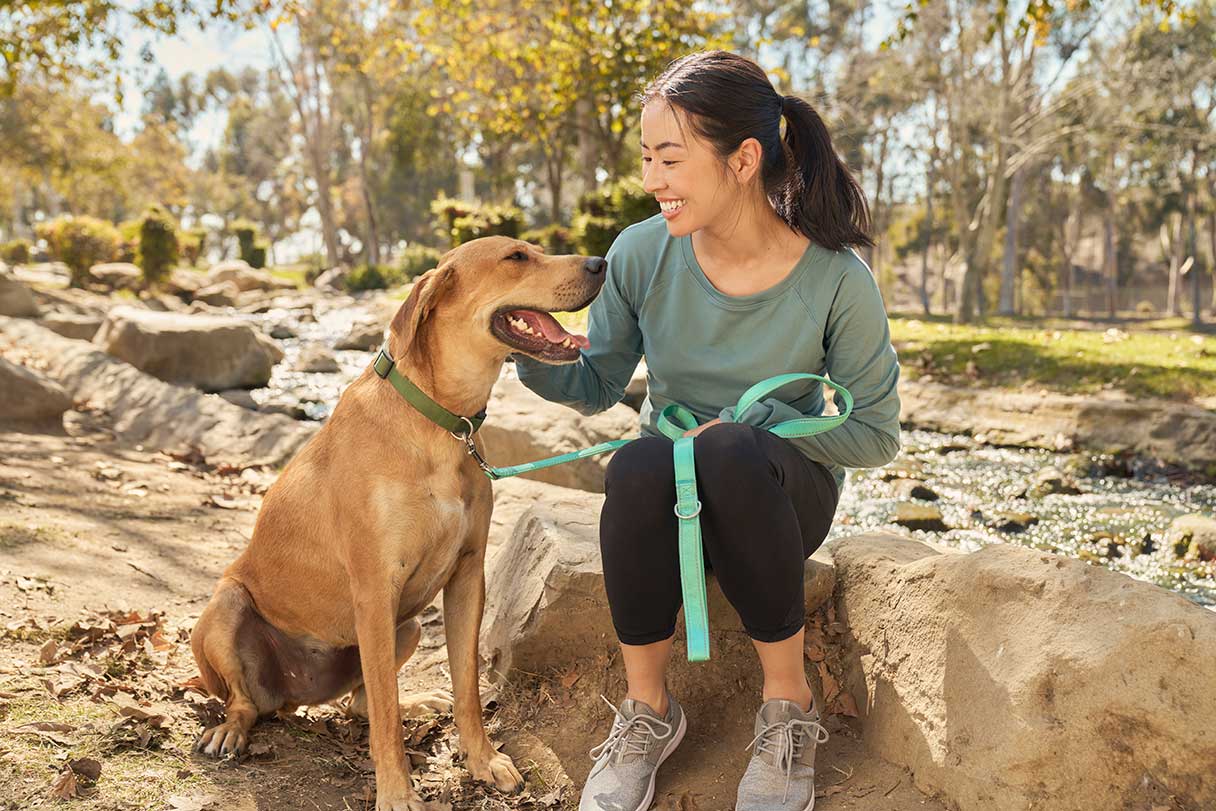Winter can be a blast for some dogs, but for a lot of dogs — and most cats — those blasts of Arctic weather are a turnoff. But whether your pet is a real snow hound or they’d rather spend cold days curled up by the fireplace, winter presents some hazards that pet parents need to watch out for.
Here are 10 things you can do to help your pets stay happy, healthy and safe when old man winter blows your way.
1. Plan Ahead
Whether you’ll be dealing with snow, ice, extreme cold or all of the above, think about what your pet will need and prepare accordingly. Will you need to shovel a path for your dog to go potty, or stock up on potty training pads so your tiny pup can go indoors when the snow is over their head? Consider your pets’ needs and routines, as well as accommodations you might have to make to follow those routines as closely as possible.
2. Prepare a Winter Kit
Get what you’ll need ahead of time so you’ll be ready when winter weather hits. A winter kit for your pet might include the following:
-
A coat or sweater for small or short-haired dogs
-
Booties to protect paws from ice, deicing chemicals and other hazards
-
Wipes to clean bellies and paws after a walk
-
Paw balm to soothe dry and cracked paws
-
Enrichment toys to keep them entertained while stuck indoors
-
Enough pet food, clean water and any necessary medications to last if you get snowed in
-
A way to keep them warm if the power goes out
-
Training pads for when going outside to potty is out of the question
You might also consider a heated pet bed or pet-safe heating pad, especially for older pets or those with thinner coats. Look for one made especially for pets, with a chew-resistant cord and washable cover. Don't use heating pads or blankets made for humans, which lack safety features and can get too hot for pets.1
3. Provide Shelter for Outdoor Pets
If you can’t bring your dog or cat indoors during winter weather, provide them with a shelter to get out of the elements. An outdoor pet shelter should be free of drafts and include the following features:2
-
Enough room to stand and turn around, but small enough to trap body heat
-
A layer of hay or straw for bedding
-
An entrance facing away from the wind
4. Look Out for Cats Who Make Their Own Shelter
If not provided with adequate shelter, outdoor cats (and small wildlife) may seek shelter under car hoods. When it’s cold out, be sure to check under the hood or bang loudly to rouse any sleeping animals before you start your car.2
5. Adjust Your Pet’s Winter Diet
Staying warm burns more calories, so outdoor pets may need their food increased to get them through the cold months.2 Check with your vet to see how much you should feed your pets throughout the winter.
Also, dry winter air can cause skin irritation for some dogs.3 Ask your vet about supplements that can help keep your dog's skin and coat healthy during the winter.
6. Make Sure They Stay Hydrated
Consider using a heated water dish for outdoor pets. Otherwise, you may need to check their water frequently and replace it if it freezes. Indoors, replace water or warm it up if it gets too cold for your pet to drink. And keep plenty of bottled water on hand for your pets in case of frozen or broken pipes.
7. Keep Dogs Leashed and Supervised
Dogs can easily get turned around and lost in the snow, so keep them leashed to keep them close.2 Snow can also hide sharp objects and become contaminated with toxins, like antifreeze, that taste great to your pup.2 Confine romps in the snow to your backyard, where you know it’s safe.
8. Get Outside When You Can
When the sun is out and temps aren’t dangerously low, even dogs who are too small or elderly to walk through snow can benefit from getting outside. Consider a sling or wearable carrier for your tiny dog, or a stroller for bigger dogs who struggle on snow or ice. For dogs who have no trouble walking, don't forget booties to protect paws from ice abrasions.5 Booties can help protect paws from salt and chemical deicers, too.4
And when you bring them back in, an oatmeal bath can soothe and replenish dry and irritated skin.6 Just be sure to dry your pet completely before taking them outside again.2
9. Protect Them From Hypothermia
Most dogs and cats are only in danger of hypothermia — that is, a dangerously low body temperature — if left outside in the cold for too long. But puppies and kittens, small dogs and senior pets can be susceptible to hypothermia even indoors. Signs of hypothermia include rapid breathing and heart rate, sluggishness, depression, dilated pupils and loss of consciousness.7
Here are some ways to help protect your pet from hypothermia:4
-
Use pet jackets and sweaters to help them stay warm.7
-
Provide plenty of warm bedding and blankets.
-
Consider using heated beds or blankets designed to be pet-safe.5
-
Move beds away from drafts and place them near heat sources.
-
Let their coats grow out for the winter.
-
Watch them closely on walks and bring them in when they start shivering.
-
Make sure they’re completely dry before letting them outside.7
-
Wipe and dry paws and bellies when bringing them back inside.2
-
Never leave your pet in the car in freezing weather.
10. Bring Playtime Indoors
Both dogs and cats need exercise and mental enrichment year-round. When it’s too cold to burn energy outdoors, here are a few ways to exercise your pet indoors:
-
Hide treats or toys around the house for them to seek and find.
-
Encourage them to walk with you around your home, or up and down the stairs.
-
Teach them how to walk on a treadmill.
-
Use your hallway to play fetch.
-
Play tug with your dog in the living room.
-
Place cat trees around the house to encourage your cat to jump and climb.
-
Teach your dog a new trick to tire them mentally.
-
Provide puzzle toys and treat dispensers for mental enrichment.
CareCredit Credit Card Financing for Dogs and Cats
Taking good care of your pet's well-being from nose to tail is essential. Make sure to stay up to date on their regular checkups at the vet to help keep your pet happy and healthy for a lifetime of love. You can use your CareCredit credit card for pet care throughout the year for routine veterinary services as well as emergencies and surgeries.* Use our Acceptance Locator to find a veterinarian near you that accepts CareCredit.
CareCredit is there for you and your pet every step of the way; continue your wellness journey by downloading the CareCredit Mobile App to manage your account, find a provider on the go and easily access the Well U blog for more great articles, podcasts and videos.
In addition to pet care, you can also use your CareCredit credit card for dentistry, cosmetic, vision, hearing, health systems, dermatology, pharmacy purchases, spa treatments and so much more within the CareCredit network. How will you invest in your health and wellness next?
Author Bio
Jean Marie Bauhaus is a freelance writer and novelist who has been writing pet content since 2013. Her work has appeared on Forbes.com, Hill's Pet, Chewy, AKC.org and more.







